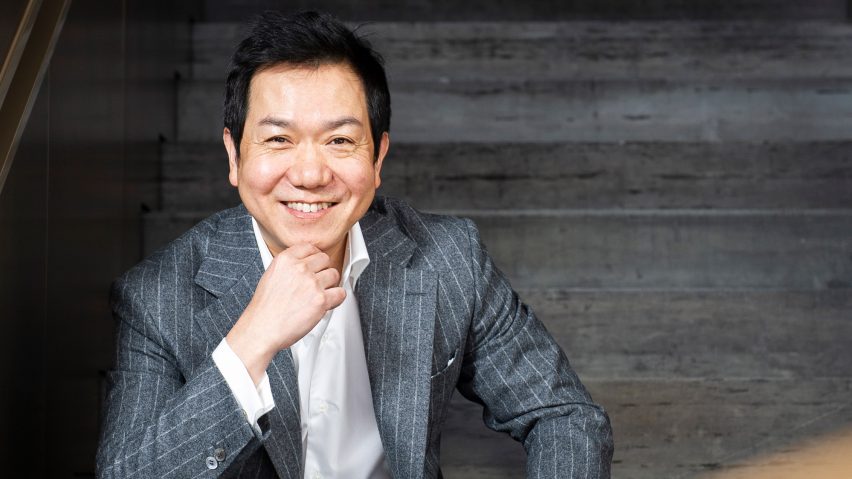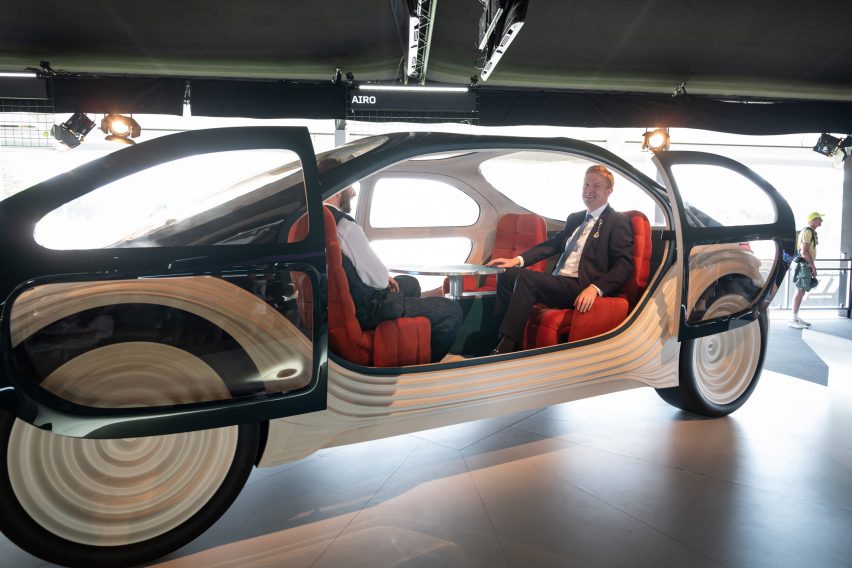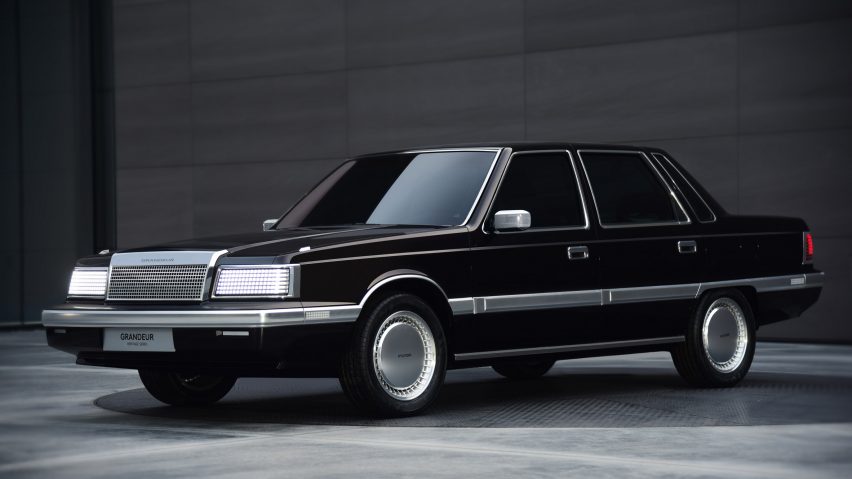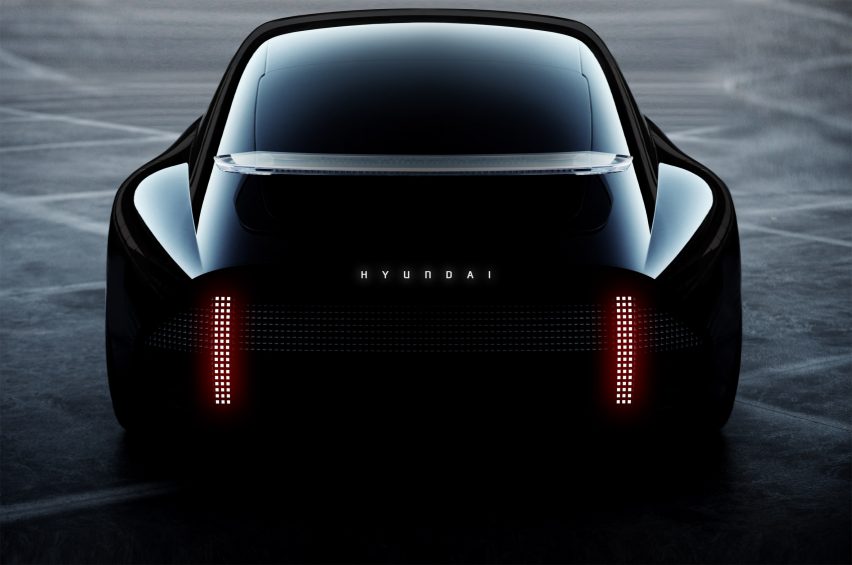
Cars of the future will be "living spaces on wheels" says Hyundai design chief
Car interiors are set to become more like homes with conventional automobiles confined to racetracks, Hyundai's global design lead SangYup Lee tells Dezeen in this exclusive interview.
"There is no border anymore – the living space of your house and your car interior space is not going to be much different," executive vice president of Hyundai Motor Company Lee told Dezeen. "It's going to be all connected together."
The fact that electric motors take up significantly less space than fossil-fuel combustion engines combined with advances in autonomous driving technology will revolutionise the way cars are designed, he claimed.
"In the future it's quite obvious the car is going to be all a variation of one box, and it's going to be more of a living space rather than a driving space," he explained.
"So I see that a car goes on a racetrack only. Horseriding used to be transportation but it's more for sports these days and I see almost the same thing happening."
"Architecture with wheels"
This shift would have a major impact on how we use our cars, Lee argued, with some people potentially even choosing to sleep in their vehicles to avoid living in expensive areas.
"I'm sure that it will influence the lifestyle and the living pattern of human beings in future," he said.
"You don't have to buy an apartment for millions and millions of pounds in London anymore, you can just one-room size. And if you want to visit the coast, you click at nighttime and the car's going to take you there, so you wake up and you're already there," he continued.
"Or if you want to enjoy the lifestyle in London, you push the button and go to London and enjoy the pub but you don't have to pay a lot of rent."
According to Lee, as cars start to function more like homes they will become "architecture with wheels", with architects taking more of a role in design.

He pointed to the Airo prototype car unveiled by Thomas Heatherwick's studio last year as an example.
"I don't consider myself a car designer anymore, I consider myself a mobility designer," Lee added. "And obviously when cars become living spaces architects can do a lot more than car designers."
Lee is one of the world's most prominent car designers, having worked with 15 different brands in eight different countries.
After growing up in South Korea, he left to study car design at the Art Center College of Design in California.
"I didn't grow up in a deep, rich car culture," he explained. "Back in the early '70s Korea was very much a developing country, there was no car culture. I was always inspired by the diverse car culture in California."
At General Motors, he was the lead designer on concepts for the Corvette and the Camaro, with the latter used for the shapeshifting character of Bumblebee in the blockbuster movie Transformers.
He later went on to become the chief designer at Volkswagen Group, working on Audis, Porsches and Lamborghinis.
Before returning to his native South Korea to join Hyundai in 2016 after 26 years abroad, he was head of exterior and advanced design at British luxury carmaker Bentley, leading the design of the Continental GT, Flying Spur and Bentayga models.
"I cannot really say I designed all those cars," he mused. "More importantly, I was able to work with passionate muscle car people, passionate British luxury car people, passionate German designers, who actually took me as part of the family."
"Something that we didn't expect at all"
In November, Hyundai caused global news when it unveiled a modernised, all-electric version of its 1980s saloon car, the Grandeur.
"This response was actually something that we didn't expect at all," Lee admitted.
The revamped Grandeur is the second iteration in Hyundai's Heritage Series, which Lee said is intended to celebrate the "passion and energy" put into its early models and strengthen the brand's design identity.
"Our original intention was to say publicly that Hyundai has a great heritage," he explained. "When you don't respect your past, you cannot really define who you are in the present, and you don't have a vision for the future."
The original Grandeur was in fact designed by Japanese manufacturer Mitsubishi, with Hyundai taking the shape and giving the car its own branding – including the name.

"For me it's often that how you interpret is even more important than how you create," said Lee. "So the Grandeur was actually a Mitsibushi idea in Japan, but the car was never successful in Japan."
"But in Korea the car was named Grandeur. This made a cultural statement: true luxury car culture has begun with this car. So this is actually a very important historical statement here in Korea, and because of that reason Grandeur got so successful."
The Grandeur followed the Heritage Series Pony, an update of the 1975 coupe designed by the legendary Giorgetto Giugiaro, who also conceived the DMC DeLorean and Volkswagen Golf Mk1.
With their retro charms and cutting-edge tech, both the Heritage Series Grandeur and the Pony embody "the perfect balance of digital and analogue", according to Lee.
Following their strong reception, his team is now considering releasing a Heritages Series model each year, with about five in the mix including the Stellar, Hyundai's first mid-sized car, and the Santa Fe, its first SUV launched in 2000.
A defining feature of the renewed Grandeur and Pony is their pixelated LED headlights.
The same hallmark appeared on the Prophecy and 45 concept cars launched in 2020, as well as Hyundai's newest mass-market products, the Ioniq 5 and the Ioniq 6. It points to a key aspect of Hyundai's design strategy under Lee's leadership.
"When you think about a car company, the traditional way of designing is basically the so-called Russian doll, or cookie-cutter design model, where all the fonts are basically the same," he explained.
But Hyundai controls a massive 80 per cent of the car market in South Korea, Lee adds. If it applies this Russian doll technique, nearly all the nation's cars will blur into one.
"There's no way for us to do the family look because all the cars will look the same if we do that."
"We don't do this Russian doll design"
"So this is why at Hyundai we don't do this Russian doll, cookie-cutter design, so-called family look," he continued. "In a way [Hyundai's approach] is a little bit like chess. You see the king, queen, bishop, knight – they all look different, they all function differently, but all together, it becomes one team."
The idea, he claims, is that when you look at a Hyundai car, you will spot the details like the pixelated lights and recognise it as part of the brand.
Lee hopes this type of design experimentation can change perceptions about Hyundais.
"Let's face it, five-10 years ago, Hyundai is known as value for money," he said.
"Value for money is a great beginning obviously, but we really want to deliver emotional value to the customer, and this is what we're doing at the moment – this is the reason for us doing all different types of concept vehicles."

Hyundai is also working with Uber on a flying taxi, which the company's chief executive has said will land in cities by the end of the decade.
Lee expresses enthusiasm for the project – but the company is not willing to say any more about it at this stage.
For his part, Lee describes himself as "an old-school guy in terms of cars". He drives a Porsche 964 wide body.
"Whoever asks me which design I worked on was my favourite, I always tell them the car that I'm working on right now in our studio," he concluded.
The portrait of SangYup Lee is courtesy of Hyundai Motor Company.